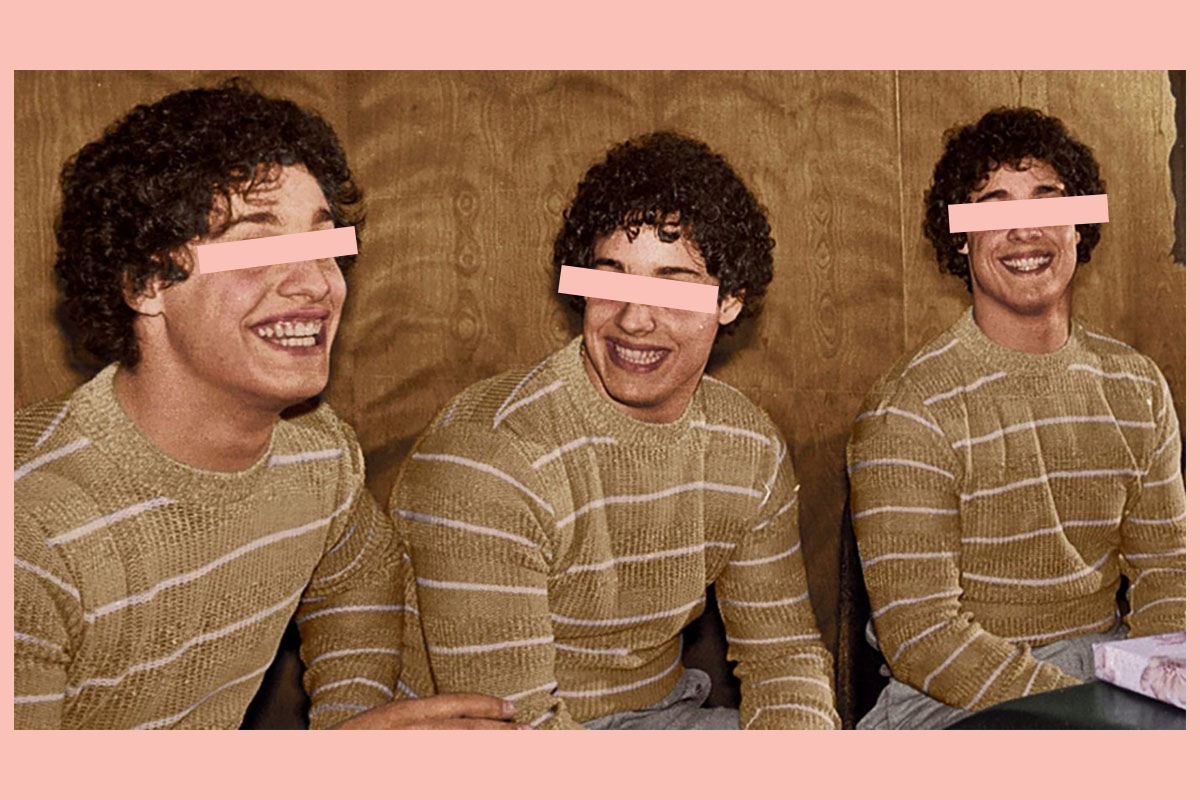We all know the story of The Parent Trap: parents separate their identical twin girls at birth; one, Hallie, lives with her father, and the other, Annie, lives with her mother. They don’t know about each other’s existence until they meet at Camp Walden, wherein the plot kicks into action. I’ll spare you the rest.
Devoted fans of The Parent Trap could never imagine this happening in real life, because it’s simply too horrible. What parents, in their right mind, would separate twins? But fans are okay watching The Parent Trap because it’s a movie — not based in truth.
But what if it actually happened? Not the whole “let’s get our divorced parents back together” part, but the “identical twins separated at birth” fiasco. What if the truth is really stranger than fiction?
Enter Three Identical Strangers. The new documentary tells the remarkable tale of David Kellman, Bobby Shafran, and Eddy Galland, identical triplets separated at birth. As one film critic put it on NPR, “Three Identical Strangers is a puzzle documentary. And the more pieces the director Tim Wardle fills in, the more astonished you get and the angrier too because what starts out as a ‘Parent Trap’-like lark becomes increasingly diabolical before your eyes.”
Spoilers ahead. Can you spoil history? I’m not sure. But spoilers for the *twist* in the documentary.
As Bobby says near the start of the film, “I wouldn’t believe the story if someone else were telling it. But it’s true, every word of it.” David, Bobby, and Eddy met for the first time at age 19. As Amy Kaufman writes in the LA Times, “What began as a miraculous fairy tale — three long-lost brothers stumble upon one another through sheer happenstance! — has since devolved into a dark tale of deception and inhumanity.”
When the three respective families adopted newborn boys from the Louise Wise Services — the preeminent Jewish adoption agency — they had not been told that their new sons were triplets. They were part of a study, led by Austrian Jewish refugee Dr. Peter Neubauer. Neubauer, a child psychiatrist, set out to study the question of nature versus nurture. Would identical twins, placed in families with different socio-economic backgrounds and parenting styles, grow up to be similar or different? Does nature win out, or does nurture take hold?
David, Bobby, and Eddy were victims of this study, which had lasting psychological impacts on them and on the other identical twins who were unknowing participants. Bobby emphasizes the fact that they were victims, not subjects, saying, “There’s a big difference. I don’t want to play off like we’re horribly injured people now as adults — we have families, we have children — we’re relatively normal people. But they treated us like lab rats. Nothing more. And we’re human beings.” As David told The Washington Post, “it was cruel; it was wrong.”
Bobby exclaims in the film, “This is like, Nazi shit!”
When journalist Lawrence Wright wrote a book on twins, Bobby points out, “We didn’t know that the first chapter was all about Josef Mengele, who experimented on twins during the Holocaust and did unspeakable things to them. And we were chapter two.” The comparisons to the Holocaust are stark: The boys were born to a Jewish mother, and each raised in Jewish families. At one point in the film, one of the boys’ aunt says, “Coming from the Holocaust, our family has the knowledge that when you play with humans, you do something wrong.” The researchers, Bobby alleges, tried to “play God.”
As the documentary progresses, the story only gets more complicated. We learn that Eddy, one of the triplets, died by suicide in 1995. As VICE points out in an interview, Three Identical Strangers treats Eddy’s death with care, because “it underscored how much of a life-and-death situation this was.” Bobby responds, saying, “It is our lives. I feel like sometimes you don’t know how you’re injured until you see the results of the injury.”
Some discovered their identical counterparts much later than David, Bobby and Eddy. Paula Bernstein and Elyse Schein, identical twin women who were also part of the study, didn’t find each other until they were 35. Schein said, “Nature intended for us to be raised together, so I think it was a crime we were separated.” Worse, some still don’t know. As of 2007, NPR reported, “Of the 13 children involved in his study, three sets of twins and one set of triplets have discovered one another. The other four subjects of the study still do not know they have identical twins.” The results of the study are sealed in the Yale University archives until 2066.
Bobby and David are currently seeking apology and compensation from the Jewish Board of Family and Children’s services (the organization that the Louise Wise Agency became). In a statement, the organization said, “The Jewish Board does not support or condone Dr. Neubauer’s study, and we deeply regret that it took place.” David told the Washington Post, “They can’t give us back our childhoods but they can find ways to show us they’re sorry.”
The Parent Trap ends with a triumphant reunion and the promise of a happy ending. Three Identical Strangers shows us that there’s no happy ending when it comes to traumatic sibling separations.
Parent Trap Week is an entire week dedicated to the 1998 iconic film, in honor of its 20th anniversary. See all the posts here.



